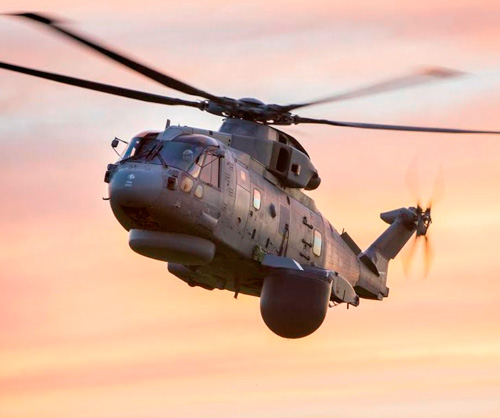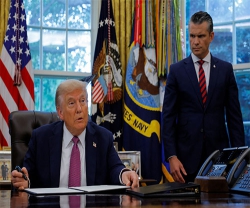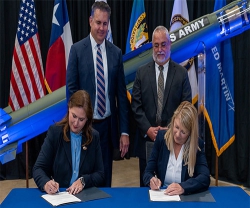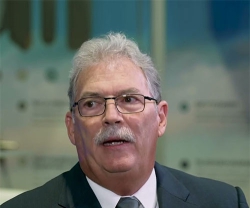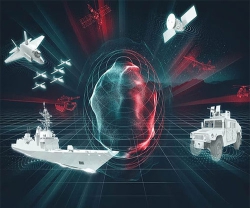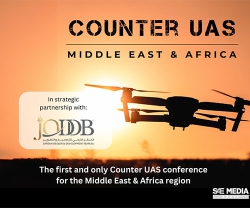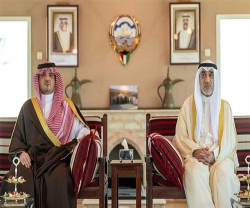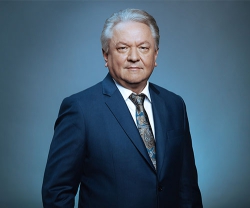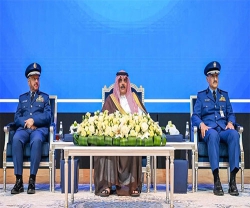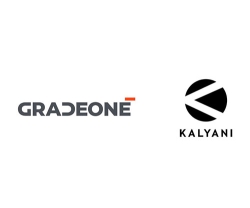Thales and Lockheed Martin announced the contract award to deliver the Royal Navy’s new airborne surveillance and control system, under the ‘CROWSNEST’ programme.
Lockheed Martin, who acts as the Ministry of Defence’s prime contractor for the Merlin helicopter, selected a new generation of the Thales Searchwater radar and Cerberus mission system to be fitted to existing Merlin Mk2s helicopters to provide the Navy with an airborne surveillance and control capability (ASaC).
The contract formally marks the beginning of the design and manufacture of role-fit equipment to be fitted to the fleet of Merlin helicopters which will serve the Royal Navy until 2029 and replace the outgoing Sea King Mark 7 ASaC force, fitted with an earlier version of the Thales Searchwater and Cerberus systems.
The new capability will begin to enter service when the last of the Sea King ASaC helicopters are retired and will maximise the re-use of the Ministry of Defence’s existing investment in equipment, training and expertise by upgrading, updating and adapting a battle proven capability. The new generation of CROWSNEST represents a step change in both user functionality and operational capability.
An improved human machine interface utilising touch screen technology and an autonomous artificial intelligence based tracking system provide the users with a highly innovative approach to the demands of modern maritime warfare.
The new system offers the operator vastly improved target identification, the ability to library match airborne contacts, as well as introducing inverse synthetic aperture radar and a fully integrated electronic support measures.
Operators are also able to exploit collected data more effectively through a greatly enhanced mission recording and replay system that allows both real time and post mission data reconstruction.
The upgraded, updated, and adapted Thales Searchwater radar and Cerberus mission system will now continue into the future to provide critical force protection to Joint forces, including the Royal Navy’s Queen Elizabeth Class aircraft carriers.
“The next generation of this battle-proven capability represents a step change in our ability to offer innovative solutions to our customers in maritime airborne surveillance. To see this battle proven capability now transition into the future, to provide critical force protection to the Royal Navy surface fleet, including the UK’s new aircraft carriers, is a significant milestone. »,” said Victor Chavez, CEO Thales in the UK.
Thales has been working with the Royal Navy to deliver rotary wing Airborne Early Warning (AEW) capability since the early 1980s when a number of surface ships were sunk by enemy aircraft during the 1982 Falklands War. The Sea King AEW Mk2 was rushed into service to fill this gap carrying a modified Searchwater radar transferred from the Royal Air Force’s Nimrod MR aircraft.
After winning the contract for a system mid-life update in 1997, Thales delivered an upgraded and enhanced Searchwater 2000 AEW radar as part of the Cerberus mission system. The upgraded aircraft was redesignated the Sea King Mk7. Thales was the prime contractor for the Sea King Mk7 programme and delivered the first aircraft in 2002 on time and to budget.
In 2009, the Sea King Mk7 squadrons from Royal Naval Air Station (RNAS) Culdrose were deployed to Afghanistan during ‘Operation Herrick’ and contributed to the confiscation of significant amounts of improvised explosive device (IED)-making equipment, arms and drugs, and the detainment of suspected insurgents. Use of the Searchwater radar provided the essential ‘eyes’ for the land force commander.
Thales is a global technology leader for the Aerospace, Transport, Defence and Security markets. With 62,000 employees in 56 countries, Thales reported sales of €14 billion in 2015. Thales has a unique capability to design and deploy equipment, systems and services to meet the most complex security requirements.

